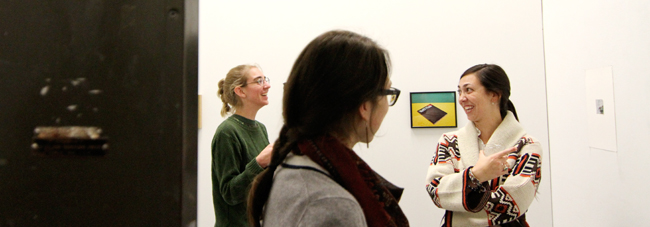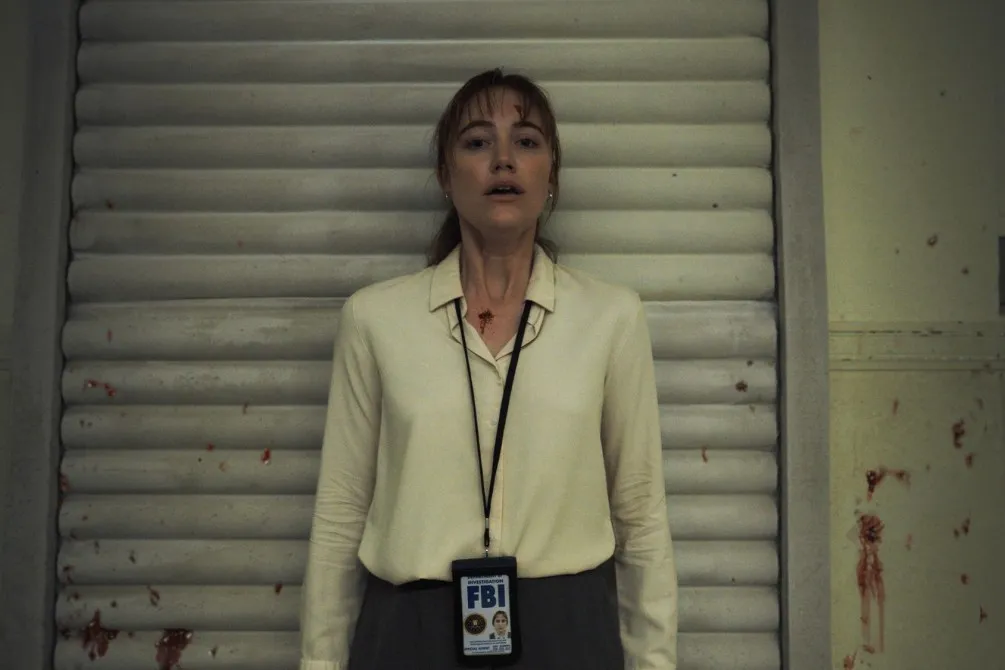A small group of students gather in a large, industrial-looking classroom in the Art Building and Museum last Monday night that holds both a sculpture studio and the tiny Callicarpa gallery. The students were celebrating the opening of the Bantam exhibit, which celebrates tiny art, a fitting theme for the miniature space.
The graduate student-run gallery, which was established this semester by M.F.A. candidates Peter Abrami and Aaron Meyers, is so small and well camouflaged that you might have trouble finding it. The gallery occupies only one small room off the larger space of the sculpture lab. At least once during the opening, the organizers had to point a confused guest to the actual exhibition space.
“It was a small space, but we had space,” Meyers explained. Meyers works mostly in sculpture, and his personal studio is a few feet away from the gallery. On the miniature size of the room, Meyers said, “it’s a limitation, but it’s a generative one.”
In the gallery, a cleverly constructed wall blocks the view of the sink that occupies a corner. The utility of the well-used workroom outside made for an unusual exhibition opening, but the gallery space itself made for an inventive and enjoyable show. It is the second exhibit that the gallery has held since its inception.
The name of this exhibit, Bantam, “means small but ferocious or small but vicious, and it usually refers to chickens. Some of my work is smaller, and I started thinking about how a small piece of art can be big,” Abrami said, explaining the genesis of the exhibit.
The pieces were limited in length, width and height to 12 inches, and the organizers kept strictly to these standards. Studio art junior Iva Kinnaird submitted a piece that exceeded the dimensions by a few inches. In her submission, she included a detailed diagram that explained why her piece didn’t fit the guidelines and why it should still be considered. When she got an email back saying her piece had been accepted, she realized the organizers had accepted not the work she intended to submit but the Photoshopped diagram she had attached to her email to lobby that her
piece be included.
More than 17 artists submitted work. They were allowed to submit up to three pieces each, and not all of the artists were students at the university. Some were UT graduates, while others were the friends of the organizers. Still others had no connection to UT and had responded to a call for submissions the organizers posted on the Texas art blog Glasstire.
Though the Callicarpa gallery will not be hosting anymore exhibits this semester, they plan on hosting three per semester in the exhibition space from this point forward.
“I think what makes this an interesting space is not so much its size but it’s proximity to workspace. It’s interesting to see work next to the environment in which art is made,” said Meyers.
Printed on Wednesday, November 14, 2012 as: Tiny art finds home in small gallery















